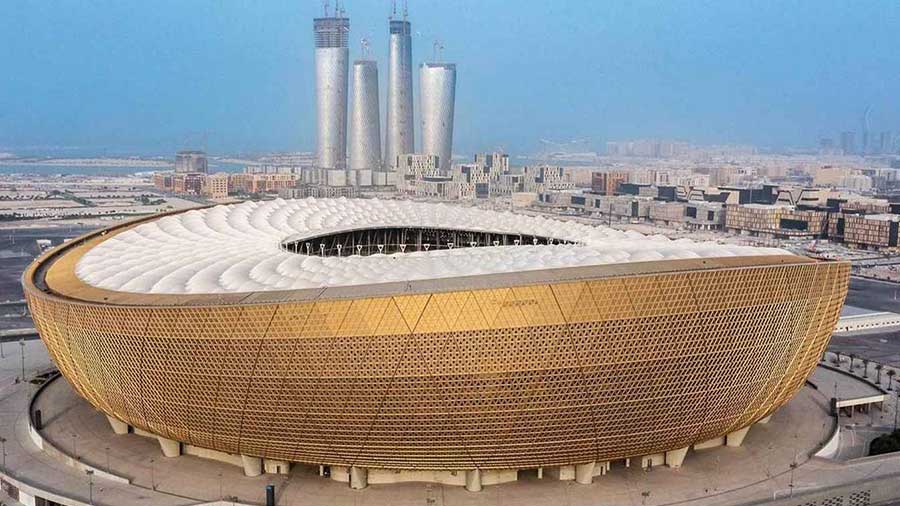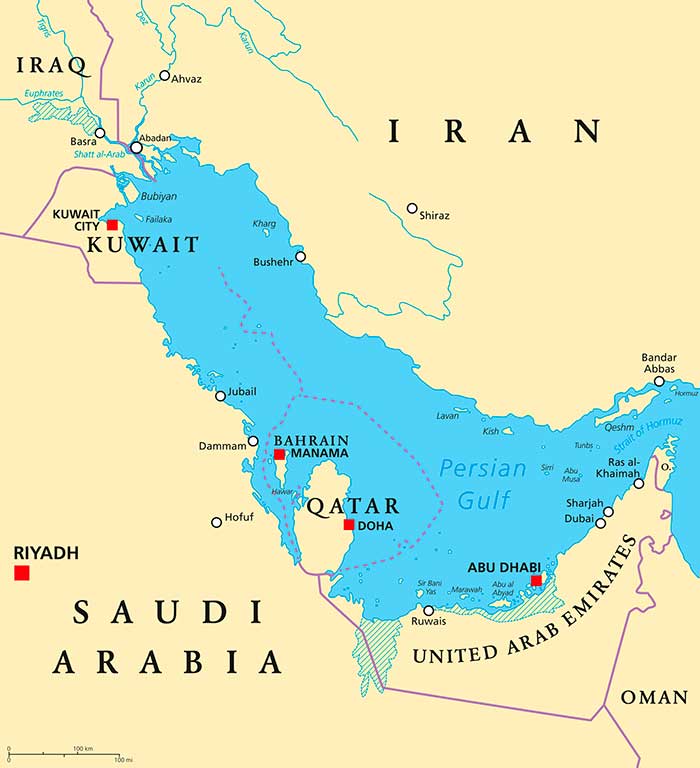China’s Belt & Road Initiative and Qatar

Chinese contractor’s built Qatar’s Lusail Stadium where the World Cup Final will be held, and the region’s largest Port.
Qatar, host of the on-going FIFA World Cup Finals, has been a BRI member since 2014, and has aligned its Qatar National Vision 2030 (QNV 2030) national development project to China’s Belt and Road Initiative.
A State visit to Beijing in November 2014 by the Emir of Qatar, Tamim bin Hamad Al Thani, was a crucial milestone in the course of building the strategic partnership framework. The visit opened a new era of cooperation between the two countries and produced a clear and complete understanding to upgrade their relationship, as well as recognising Qatar’s regional role as an economic and security partner. As Chinese President Xi Jinping said, ‘Qatar is an important country that plays a unique role in the Middle East and Gulf region, and is a major partner of China’.
China’s measures to formalise strategic partnerships with Qatar include seven major areas for cooperation within the BRI. These areas are policy coordination, connectivity, trade and investment, energy cooperation, financial cooperation, military ties, tourism, and cultural ties. However, each country views the BRI framework and reacts to it according to its perspective and consequences for its national interests and international status. This means that the two countries have very different attitudes regarding how to realise the vision. While QNV 2030 and China’s Belt and Road have converged on a common economic development path, and their synergetic strategy has bought new opportunities for both sides. As a result, the realisation of the BRI provides a new momentum for Doha’s economic transformation.
The deep relations and strong economic ties in a wide range of cooperation areas that extend from the ongoing export of Qatari gas to Beijing, to joint infrastructure construction projects and Chinese investments in Doha, through constructive and positive exchanges in the domains of finance, tourism and culture have helped to build a solid foundation for cementing these relations and to formalise a comprehensive strategic partnership in the future with Qatar.
In January 2019, the Qatar’s Sheikh Tamim bin Hamad Al-Thani arrived for a further two-day state visit in China, and both countries agreed to deepen the bilateral strategic partnership and create a strategic dialogue between the governments. The last visit drew a roadmap to boost strategic partnership between the two countries in the fields of politics, economics, investment, energy, technology and security cooperation. The Chinese President also called the two sides to further synergise their development strategies and jointly build the BRI.
Qatar is also in a position to benefit from the implementation of the Belt & Road Initiative since deeper Sino-Qatari cooperation can brighten the prospects for its QNV2030. In April 2017, the Qatar Chamber and the China Council for the Promotion of International Trade signed an agreement to promote cooperation ties between the two sides to maximise the benefit for Qatari and Chinese private sectors (private entrepreneurs) and create more partnerships. The two sides also signed an MoU for Qatar’s Chamber of Commerce to join the Silk Road Chamber of International Commerce. In November 2018, China and Qatar signed an MoU to identify global maritime investment opportunities, to serve both QNV2030 and China’s BRI intentions.
Qatar also needs to boost economic cooperation and trade exchange with various countries, including China, to diversify the national economy from reliance on oil and gas export to become a global financial and commercial hub, although challenges remain from neighbouring Saudi Arabia, Oman, and the UAE, with whom political differences remain. A major driver behind Qatar wanting to host the FIFA World Cup in the first place, and still valid today, is to globally assert its status as a sovereign nation and not as a vassal state of Saudi Arabia.

Doha also needs the technologies and the experience of Chinese companies which have much needed expertise in management and production. Just 300,000 Qatari’s exist with not enough HR skills to manage significant projects – a potential failing of the FIFA event that the organisation should have been aware of. Nonetheless, the Qatari government is trying to promote strategic partnerships with China that should incorporate the BRI into its national development plan. As Sheikh Tamim bin Hamad Al-Thani said, Qatar attaches importance to ties with China and vows to promote cooperation in the BRI, as well as areas such as trade, sports and tourism.
An outstanding, globally visible end product of this is the Lusail Stadium. The stadium was designed by British firm Foster + Partners, and US Architects Populous, and built by Qatar’s HBK Contracting and the China Railway Construction Corporation.
The Lusail Stadium is cooled using solar power and has a zero-carbon footprint. Construction began on 11 April 2017. and it is hosting ten 2022 World Cup games, has a current capacity of 80,000 and will also host the Final.
Following the World Cup, it is expected to be reconfigured into a 40,000-seat stadium. Excess seating will be removed, and other parts of the building repurposed as a community space with shops, cafés, athletic and education facilities, and a health clinic.
The stadium aside, more than 14 fully owned Chinese companies are currently operating in Qatar, in addition to 181 joint Qatari–Chinese firms. According to Minister of Commerce and Industry Ali bin Ahmed al Kuwari, China represents an attractive destination for Qatari investments in shipbuilding, manufacturing, petrochemicals, technology, hospitality, tourism and financial services among other vital industries. Qatar also allows foreign investors 100% ownership across various sectors and industries.
Beijing and Doha are also connected through a network of cooperation in various investment and infrastructure projects and other areas. Beijing investments and contracts in Qatar from 2013 to 2018 reached US$3.9 billion. Chinese enterprises have also participated in the construction of several strategic projects in Doha, such as the Hamad Port and other infrastructure works across the country, while Qatari companies are entering the Chinese market. The private sector in both countries could play a bigger role in the future of economic relations, especially given abundant investment and business opportunities.
The Hamad Port is located 40 km south of Doha, and is 14 times the size of the existing Doha port. The new port is one of the largest ports in the Middle East and considered to be the world’s largest port development project built on unused land. The US$7.4 billion port replaced the existing Doha port, and was partly built and is operating by the China Harbor Engineering Company that constructed the port basin, the quay walls and the inner breakwaters. In January 2017, Qatar launched the first-ever regular direct maritime service between Hamad Port and Shanghai, which helps reduce the sailing time and increases the handling volume of containers coming to Doha from the Far East, Southeast Asia and Southeast India. The Hamad container port forms part of the QNV2030, which aims to promote trade and investment by bringing in machines, boilers and electrical equipment. These new trading lines are helping Qatar diversify its economy by boosting its manufacturing capacity and breaking its dependence on its neighbours – and the World Cup Final Stadium as its most visible product.
Related Reading





